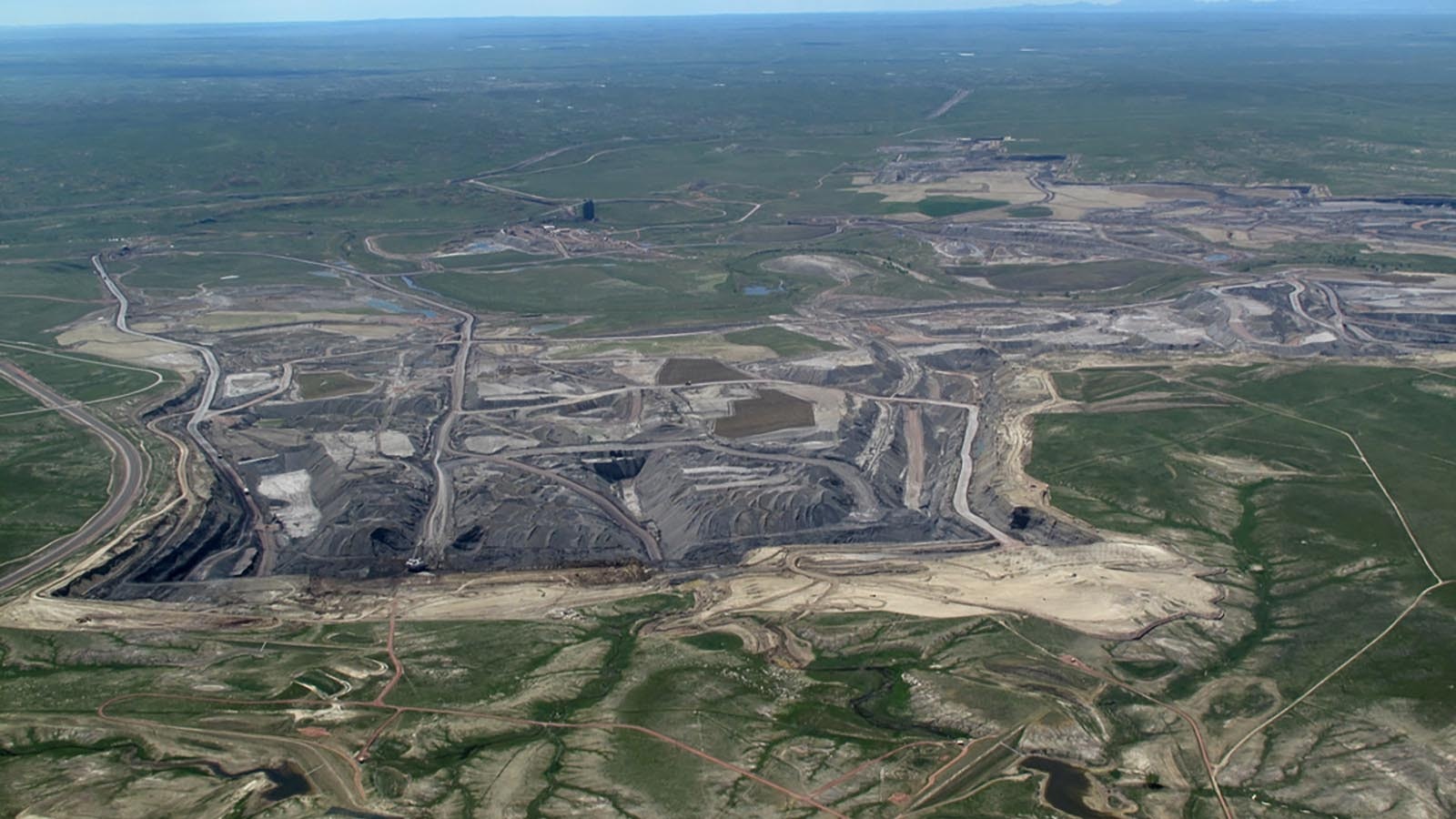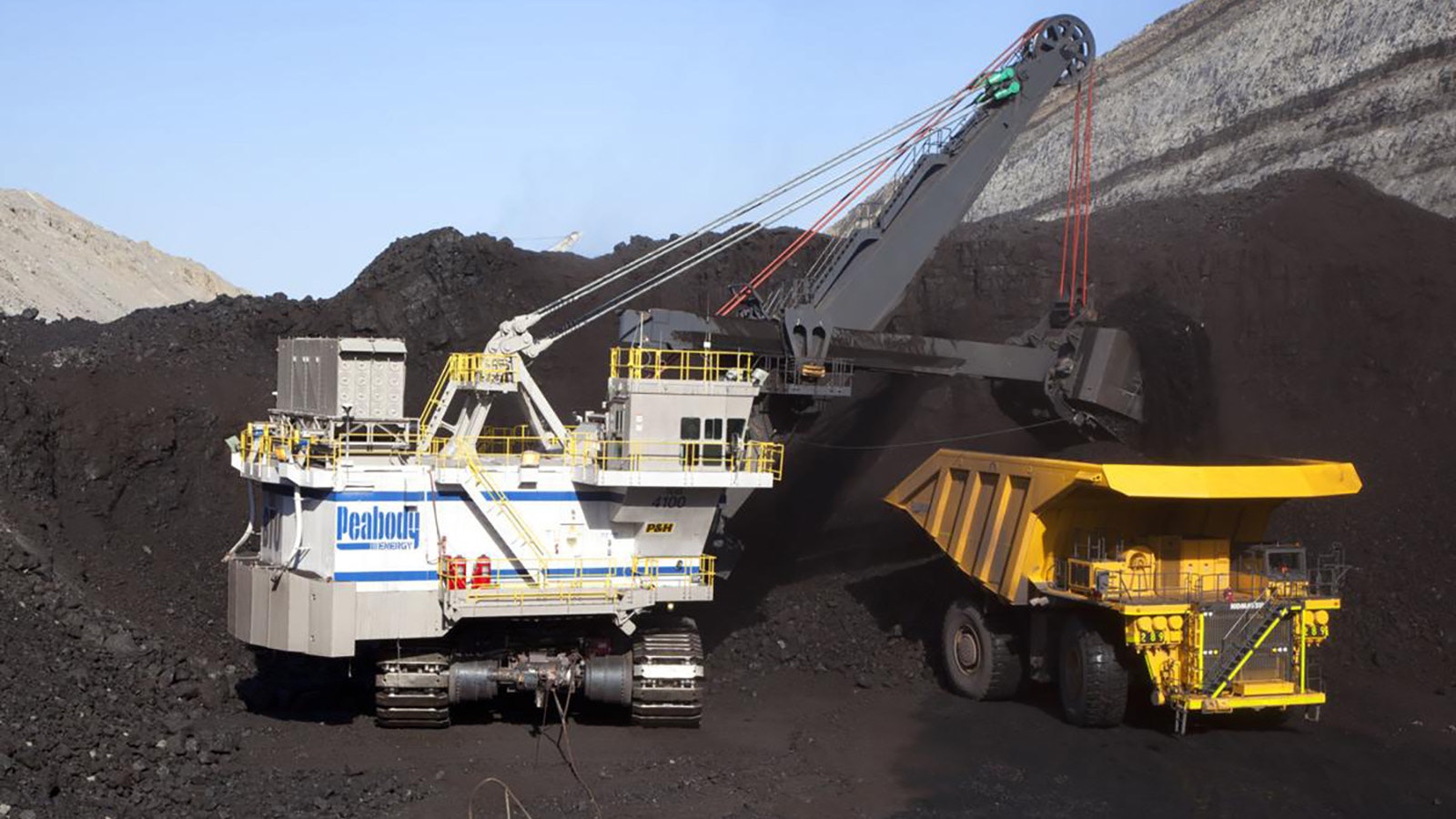The Powder River Basin’s two largest producers continue to be the canary in Wyoming’s coal mining industry, showing the relative health — or struggles — of a region that once dominated U.S. power generation.
Between them, Peabody Energy and Core Natural Resources (formerly Arch) control a huge slice of Wyoming’s coal production, as shown by both companies in their 2025 first quarter earnings reports released last week.
Together, their five PRB mines produced a little more than 32 million tons of coal in the first three months of the year, which is nearly 66% of the basin’s entire 49 million tons sold. They also account for 63% of the 3,477 coal mining jobs in the basin with 2,190 workers.
Peabody made $38 million. Core, which finalized its merger with Arch Resources in January, lost more than $62 million.
While both companies paint an optimistic picture of increased coal production and projections for the rest of 2025, they’re only a shadow of what the companies and the PRB used to be.
A Decade Of Decline
Flash back a little more than a decade, and both Peabody and Arch had hit a peak. They also statistically dominated the PRB as they do today. They accounted for 66% of all the coal from the basin in 2014, the same as now.
But their five mines combined to pull 252 million tons of coal out of the ground that year, more than the entire PRB did in 2024, when 185.15 million tons marked the first time since 1992 it had fallen below 200 million tons.
It’s a golden age for Wyoming coal that’s not likely to repeat without some serious advances in power generation technology that could ease an overall U.S. social taboo on burning coal for electricity.
While there’s no denying the decline of coal, it’s still Wyoming’s dominant industry and isn’t close to extinction, said Holly Krutka, executive director of the University of Wyoming School of Energy Resources.
“There are no mines like (those operated by Peabody and Core) in the entire nation,” she said. “I tend to think optimistically about what could happen. But the reality is that the power plants in the United States, many of them are older, and the coal-fired power plants are being shut down.
“It’s certainly possible the rate of decline will slow down, but for the coal production in Wyoming to flatten long-term, there has to be more plants built or more uses found for coal.”
That’s started to happen to a small degree in this past first quarter, but it’s not an indication of any kind of longer-term stability, said Rob Godby, an associate professor of economics at UW and one of the nation’s leading energy economists.
“It’s a healthy place to be right now with the Trump administration relaxing things a little bit,” he said about the pro-fossil fuels focus of a new presidential administration. “If we have a hot summer, it could be good news for these coal miners.”

Still The Big Dogs
As the overall impact of the shrinking of Wyoming’s coal production plays out with state economists and budget-makers, it’s more personal for those who make the Powder River Basin home in Campbell and Converse counties.
In 2014, the PRB accounted for more than 5,600 coal jobs, and thousands more in local support industries and companies. After the first quarter of 2025, there were 3,477 workers at basin mines, the federal Mine Safety and Health Administration reports.
Each of those numbers represent a local person and family, said Scott Clem of Gillette, a Campbell County commissioner and former state legislator.
Those mines “are incredibly important,” he told Cowboy State Daily. “Coal is still what drives our economy in Campbell County and Wyoming.
“Just the cultural ties with regard to fossil fuels, all of that has had an effect on us. I was in the Legislature when things were really, really good. Then all of the sudden the bottom fell out.”
He said the “dread that coal is someday going to zero” doesn’t seem likely.
“You have these cycles, and I think that’s where we’re in,” he said. “It’s not ideal to still be heavily reliant on one industry, but at the same time I don’t see that going away.”
A Blow To The Core
Also hanging over the Powder River Basin like a cloud is a promise Arch made years ago to get out of the PRB, which seems to also be the intention of Core, which mostly mines metallurgical coal rather than thermal.
Its Coal Creek mine is all but done with coal, reporting a paltry 0.28 tons mined in the first quarter, compared to .05 tons in 2024. Most of the 36 employees still there are working on land reclamation rather than mining.
The other shoe waiting to drop is Black Thunder, the second most productive mine in the PRB — and at one time the world.
With nobody showing interest in buying Black Thunder to continue mining, Arch/Core is still making money by pulling coal out of it. But that’s on a short rope, Godby said.
That’s only going to continue until the available coal is played out. Core isn’t likely to invest money into going after new deposits, which would include significant investment like relocating a rail line.
“I think they just run it until it doesn’t make sense to run it anymore,” he said. “The bottom line is, (Core) is making a pivot. They’ve got one of the two best assets in the PRB, but Black Thunder is challenged in the way NARM is not, because they have to make some significant investment in that mine if they want to keep it going (long-term).”
NARM is Peabody’s North Antelope Rochelle mine, which borders Black Thunder to the south and historically has been the most productive coal mine in the world.
In 2014, NARM set a record when it produced 118 million tons itself, while Black Thunder also cracked triple digits at 101 million tons. That still stands as the only time two mines in the Powder River Basin have produced more than 100 million tons in the same year.
“By far, that southern PRB coal is the most valuable,” Godby said, adding that for now, “that thermal coal is seen as a diminishing market.”

Any Port In A Storm
Aside from a seismic shift in U.S. power generation policy that sees more coal-fired plants built or extended, any future for Wyoming coal that includes meaningful growth lies in realizing what has so far been a frustrating pipe dream.
There are overseas markets for Wyoming’s low-sulfur coal, but so far there has been no way to get it there that makes economic sense.
If a West Coast coal port could be established, that could put the PRB back into overdrive, Krutka said.
“The market for the coal is there, it’s just getting the export terminal,” she said. “Should we still be hopeful? That’s a tough question. I think we have to be hopeful, but we have to find investors willing to take on the export terminal.”
Godby agrees, saying that domestically, “the pond has dried up a little bit, that’s for sure.”
With West Coast states maintaining an anti-coal focus and a history of fighting coal exports, states like Wyoming will have to get creative and collaborate with other states, said Travis Deti, executive director of the Wyoming Mining Association.
“Right now, the president is talking about coal exports, and that’s encouraging,” he said. “And you have other states like Utah also trying to get around the Big Green Barrier that is the Pacific Northwest.”
Greg Johnson can be reached at greg@cowboystatedaily.com.





